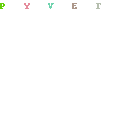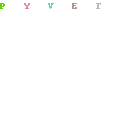Juanita is preparing to go grocery shopping and is making a list. However, when she gets to the store she realizes that she has forgotten the list. Which of the following best describes the list of items Juanita is likely to remember:
A. eggs, milk, cheese, bread
B. eggs, milk, cheese, bread, ketchup
C. eggs, milk, cheese
D. eggs, milk, cheese, bread, ketchup, lettuce, pickles
Answer
If Juanita forgets her shopping list at home, she will probably buy the items she usually buys when she goes to grocery store.
Juanita is preparing to go grocery shopping and is making a list. However, when she gets to the store, she realizes that she has forgotten the list. Juanita is likely to remember eggs, milk, cheese, bread, ketchup, lettuce, pickles list.
Memory is defined as information that is encoded, stored, and retrieved. Encoding is the first stage of memory, where we take in new information. Storage is the second stage of memory, where we keep the information that we have encoded. Retrieval is the third stage of memory, where we access stored information.

-the persistence of learning over time through the encoding, storage, and retrieval of information.
-storehouse of accumulated learning
-the immediate, very brief recording of sensory information in the memory system.
-“to be remembered”
-visuospatial sketchpad
-central executive (general purpose workspace)
-a newer understanding of short-term memory that adds conscious, active processing of incoming auditory and visual-spatial information, and of information retrieved from long-term memory.
-retention of learned skills, or classically conditioned associations, without conscious awareness.
-motor learning, emotion, habit
-retention of facts and personal events you can consciously retrieve. (people and events)
-stored in hippocampus
-a limbic system neural center that is our brain’s equivalent of a “save” button
-deep inside temporal lobe
-stores explicit memories



-a clear memory of an emotionally significant moment or event.
-unforgettable moments (tragedy, joy or near misses)
-stored in long-term storage
-vivid but can also change over time
-increased neural efficiency
-enables learning and memory
-memory demonstrated by retrieving information learned earlier, as on a fill-in-the-blank test.
-retrieving information out of storage and into your conscious awareness. Example: a fill-in-the-blank question.
-stored memory to active memory
-memory demonstrated by time saved when learning material a second time.
-learning something more quickly when you learn it a second or later time. Example: Reviewing the first weeks of course work to prepare for your final exam, you will relearn the material more easily than you did originally.
Multiple-choice questions test our
A. recall.
B. recognition.
C. learning.
D. sensory memory.
-the activation, often unconsciously, of particular associations in memory.
-happens without your conscious awareness, it can influence your attitudes and your behavior.
-active memory to stored memory
-can distort memory over time
-sometimes produces a false memory
-a hub for working memory
–
Who developed the Stage Model of Memory?
Yadin Dudai
Robert Bjork and Eric Kandel
Richard Atkinson and Richard Shiffrin
Brian Butterworth and Nelson Cowan
In the Stage Model of Memory, how does information first enter the memory system?
working memory
sensory memory
long-term memory
short-term memory
John is taking a bus to school. He sits in the third row behind the driver and places his book bag under his feet. He then looks out the window as the bus travels its route. The bus stops and picks up additional passengers. A woman in a blue shirt with a baby sits in the seat next to John. When the bus arrives at school John takes his bag and exits the bus. Later that day he sees a woman in a blue shirt and thinks that she resembles the woman on the bus. Why did John remember the color of the woman’s shirt?
The woman was attractive.
John was distracted by the woman’s baby while on the bus.
John paid attention to the woman while on the bus.
The woman sat next to John.
Short-term memory is also called:
stage memory.
working memory.
long-term memory.
sensory memory.
Where does memory go in the second stage of the Atkinson-Shiffrin model of memory?
long-term memory
stage memory
short-term memory
sensory memory
Maintenance rehearsal can be used to keep information in:
short-term memory.
sensory memory.
long-term memory.
stage memory.
Samantha is taking a psychology course and wants to do well. Every day she reviews her notes from class and reads the textbook. When it is time to take the first exam Samantha has no problem retrieving the information and earns an A on the exam. Samantha has stored the information in:
sensory memory.
working memory.
short-term memory.
long-term memory.
Samantha is taking a psychology course and wants to do well. Every day she reviews her notes from class and reads the textbook. When it is time to take the first exam Samantha has no problem retrieving the information and earns an A on the exam. How did Samantha answer the questions on the test correctly?
She transferred information from her long-term memory to her sensory memory.
She transferred information from her working memory to her sensory memory.
She transferred information from her long-term memory to her short-term memory.
She transferred information from her short-term memory to her sensory memory.
How much information can we hold in short-term memory?
7 +/- 2
8 +/- 2
10 +/- 2
3 +/- 2
Which of the following researchers determined the capacity of short-term memory?
Richard Shiffrin
George Miller
Richard Atkinson
Erik Erikson
Juanita is preparing to go grocery shopping and is making a list. However, when she gets to the store she realizes that she has forgotten the list. Which of the following best describes the list of items Juanita is likely to remember?
eggs, milk, cheese
eggs, milk, cheese, bread, ketchup, lettuce, pickles
eggs, milk, cheese, bread, ketchup
eggs, milk, cheese, bread
Most people are able to remember between:
two and four items.
five and seven items.
three and five items.
five and nine items.
How long is information in short-term memory likely to last?
7 seconds
35 seconds
10 seconds
20 seconds
Considering what is known about memory, most telephone numbers are seven digits long because:
seven digits is the capacity of long-term memory.
seven digits is the capacity of telephone companies.
seven digits is the capacity of short-term memory.
seven digits is the capacity of sensory storage.
Suan just asked Monica for her phone number but did not write it down. What can he do to remember the information long enough to grab a pen and paper?
Recall that Monica is in his class.
Make sure he writes with a red pen.
Repeat the number over and over in his head.
Repeat Monica’s name in his head.
Researchers have found that short-term memory lasts about 20 seconds, unless the information is _____ in some way.
recalled
forgotten
attended to
rehearsed
What is the third stage of the Stage Model of Memory?
sensory memory
short-term memory
long-term memory
working memory
Which of the following best describes the Stage Model of Memory?
working memory; long-term memory; sensory memory
short-term memory; working memory; long-term memory
long-term memory; stage memory; sensory memory
sensory memory; short-term memory; long-term memory
Which of the following must be used to maintain information in short-term memory?
maintenance rehearsal
elaborate rehearsal
reiterate rehearsal
lingering rehearsal
One of the most popular models of how memory works is the:
Stage Model of Memory.
Rehearsal Model of Memory.
Practice Model of Memory.
Initial Model of Memory.
Our unconscious capacity for learning how to do something is known as _____ memory.
sensory
implicit
explicit
declarative
A multiple-choice test is a good example of a test of:
retrieval.
relearning.
recognition.
recall.
Which statement is TRUE regarding the order in which memory processes occur?
Retrieval follows storage.
Storage follows retrieval.
Encoding follows retrieval.
Storage precedes encoding.
The hippocampus and brain cortex display simultaneous activity rhythms during sleep. This supports the process of:
amnesia.
memory consolidation.
distributed practice.
procedural memory.
Which measure of retention is the LEAST sensitive in triggering retrieval?
They are all equally sensitive.
recognition
recall
relearning
Tameka is reading a novel. When the phone rings, she looks up to see if her husband is going to answer it, which he does. She returns her attention to the book, going back to the exact spot on the page where she left off. Tameka is able to effortlessly return to her reading because:
she is extremely bright.
women are better at remembering their place in a book than men.
of the automatic processing of space.
of the effortful processing of space.
Mabel has Alzheimer’s disease and her _____ memories for people and events are lost, but she is able to display an ability to form new _____ memories by being repeatedly shown words.
explicit; detailed
implicit; explicit
explicit; implied
explicit; implicit
You hear a familiar word in your native language and it is virtually impossible NOT to recognize the word’s meaning. This BEST illustrates the importance of:
flashbulb memories.
the spacing effect.
automatic processing.
iconic memory.
When you encode a piece of target information, other bits of information become associated with it. The bits of information connected with the target information are known as:
retrieval cues.
iconic memories.
flashbulb memories.
primacy cues.
While you probably wish that your study time was automatic, unfortunately, successful studying for introductory psychology requires attention and conscious effort known as:
implicit memory.
linguistic determinism.
effortful processing.
consciousness.
Many people can easily recall exactly what they were doing when they heard news of the Sandy Hook school shootings in Newtown, Connecticut in 2012. This BEST illustrates _____ memory.
flashbulb
echoic
implicit
iconic
Whenever Sunny gets blue, she immediately is flooded with thoughts of failed relationships and missed chances. Sunny’s experience BEST illustrates:
mood-congruent memory.
retroactive interference.
the misinformation effect.
repression.
Damage to the _____ would MOST likely interfere with learning a conditioned fear response to the sight of a dog that had bitten you on several occasions.
hippocampus
cerebellum
basal ganglia
hypothalamus
Mr. Nydam suffers amnesia and is unable to remember playing golf on a particular course. But the longer he plays the course, the more his game improves. His experience illustrates the difference in:
recognition and recall.
proactive interference and retroactive interference.
explicit memory and implicit memory.
short-term memory and long-term memory.
Professor Wallace studies memory in people who have had strokes. Professor Hansen studies people who claim to have clear memories of events that happened over three decades ago. Such research on the extremes of memory:
makes us realize that it is impossible to study memory.
helps us to understand how memory works.
explains how consciousness works.
is not useful to psychologists who study normal memory.
A group of 50-year-old adults is asked to think about their high school classmates. Although they have difficulty recalling their classmates, when presented with their yearbooks they can recognize about _____ percent of their pictures and names.
35
75
90
50
At a block party, Cyndi meets nine new neighbors. Moments later, she can only remember the names of the first three and last two neighbors she met. The fact that Cyndi can remember the first few people she met BEST reflects the _____ effect.
primacy
recency
serial position
flashbulb memory
The primacy and recency effects are both components of the _____ effect.
flashbulb memory
serial position
testing
mood-congruent memory
-in psychoanalytic theory, the basic defense mechanism that banishes from consciousness the thoughts, feelings, and memories that arouse anxiety.
-we repress painful or unacceptable memories to protect our self-concept and to minimize anxiety.
(1) Encoding failure: Unattended information never entered our memory system.
(2) Storage decay: Information fades from our memory.
(3) Retrieval failure: We cannot access stored information accurately, sometimes due to interference or motivated forgetting.



